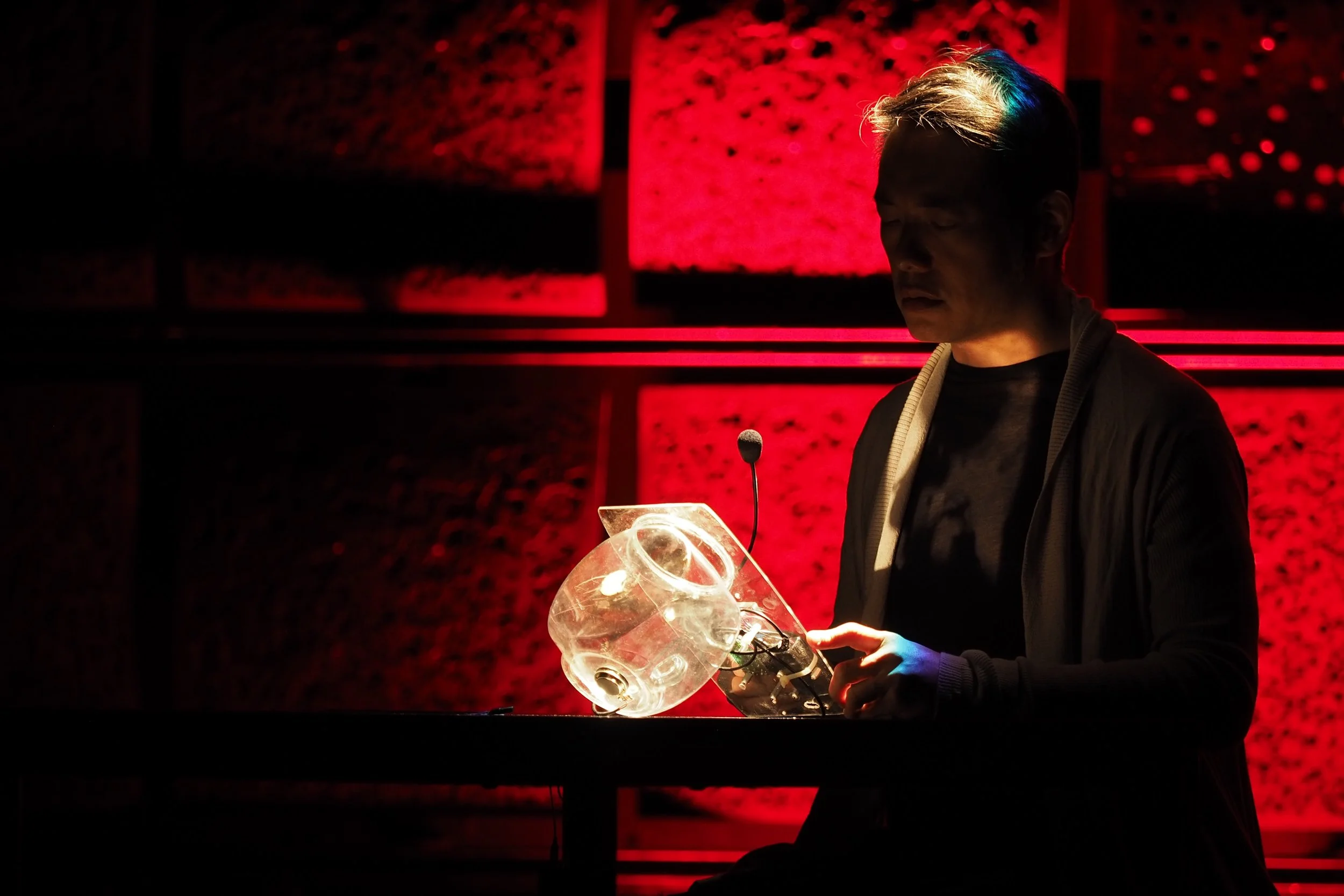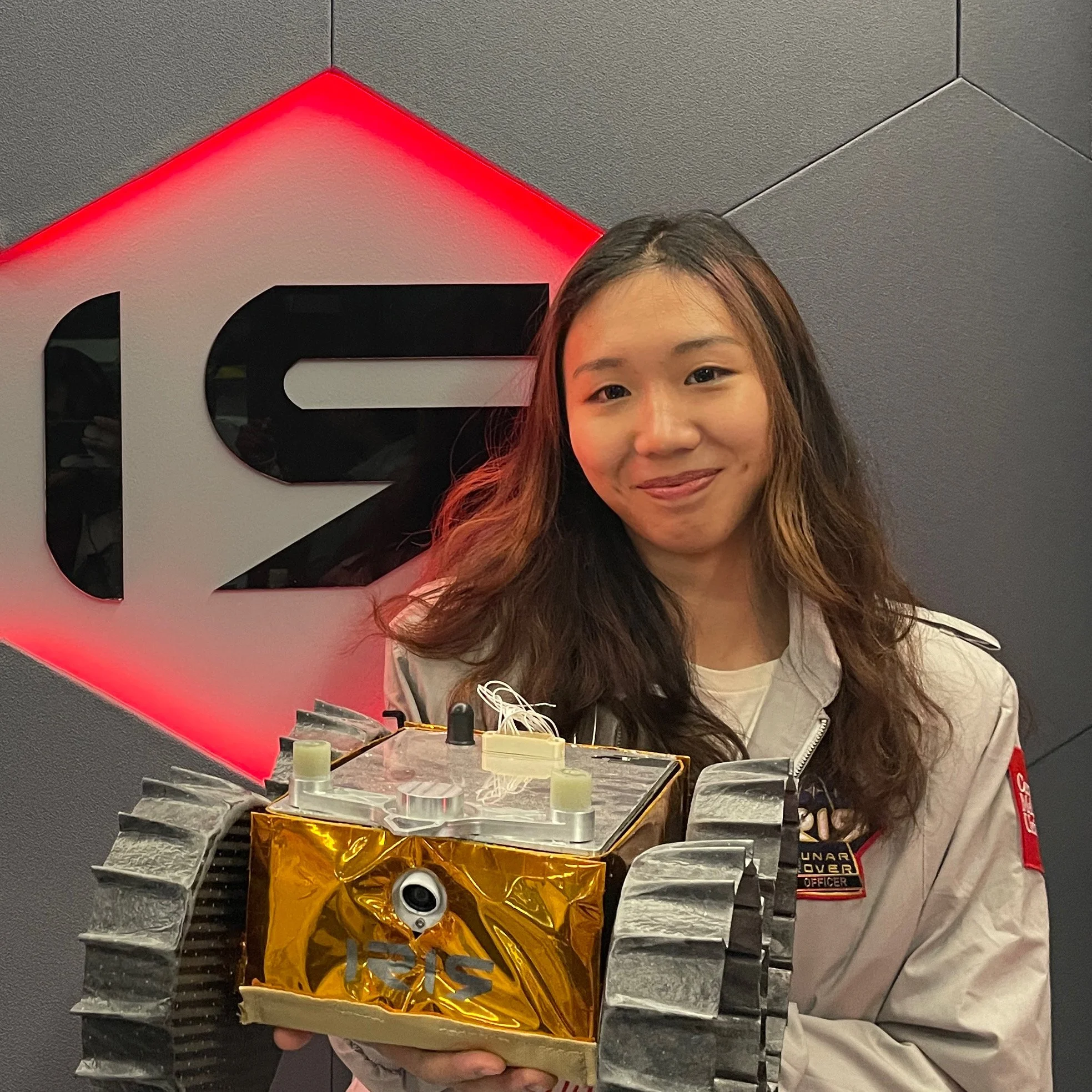CRCI 2025: Moondance
Speakers & Performers
-

Kate Ladenheim
COMMIT!
Kate Ladenheimis a choreographer, educator, and creative technologist whose artistic work and scholarship spans interactive installations, media design, performance, and robotics. Their practice investigates the interplay between social and technological systems, focusing on how bodies navigate, subvert, and are ultimately shaped by these forces.Ladenheim is currently an Assistant Professor of Choreography at UCLA’s department of World Arts and Cultures/Dance, and a recipient of the Google Artists + Machine Intelligence Faculty Research Award. They were previously Artist in Residence in creative practice at the Maya Brin Institute for New Performance, a faculty role at the University of Maryland. Ladenheim holds an M.F.A. in Media Design Practices from ArtCenter College of Design, where they were also a postgraduate fellow. She conducted research in motion interfaces for robotics design at U.C.L.A., and was the 2019-2020 Artist in Residence at the Robotics, Automation, & Dance Lab at the University of Illinois at Champaign-Urbana.
Ladenheim's artistic projects have been presented internationally, including at The Invisible Dog, National Sawdust, Media Art Xploration, DancePlace (DC), Joe’s Pub at The Public Theater, HERE Arts Center, The Edinburgh Fringe Festival, and The Performance Arcade (New Zealand). They were a member of the 2024 MAXmachina Lab cohort, as well as an Artist in Residence at the Barnard Movement Lab. Their work has been celebrated in Dance Magazine as one of “25 to Watch” and “Best of 2018.” Their current project, Gestural Publics, is supported by a 2025 Creative Capital Award.
-

Mollye Bendell
COMMIT!
Mollye Bendell is an interdisciplinary artist with a focus in immersive and electronic media. She has received grants and residencies from Wave Farm WGXC, the Harvestworks Digital Media Arts Center and the Tides Institute and Museum of Art. Awards include the GBCA Baker Artist Award, the MSAC Independent Artist Award and the RW Deutsch Foundation Rubys Artist Grant. She is also a founding member of media arts collective strikeWare, which creates experiences grounded in our collective history, often using new technologies to emphasize the nowness of that history. Mollye’s solo work has been exhibited in venues such as the Baltimore Museum of Art, the New York Electronic Arts Festival, CURRENTS New Media Festival, and National Sawdust. Public art commissions include Ladew Topiary Gardens and the City of Redmond, Washington. She has recently exhibited at the BlackRock Center for the Arts, the Jewish Museum of Maryland and the John F. Kennedy Center for the Performing Arts. Mollye is an Assistant Professor of Art with a focus in Immersive Media Design at the University of Maryland, College Park. -
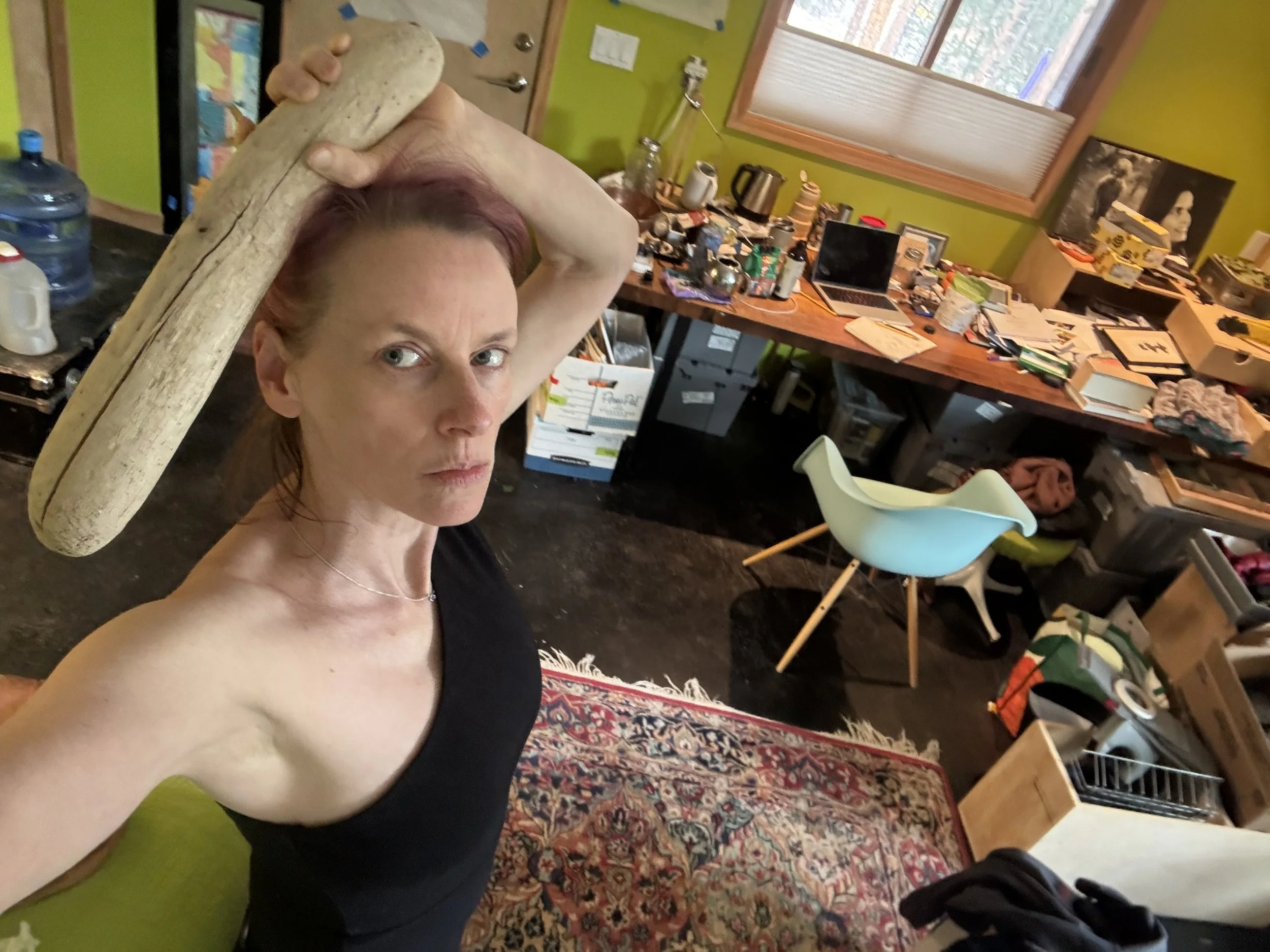
Michelle Ellsworth
Q&A with the COMMIT! Cast
Michelle Ellsworth often co-mingles technology and carpentry with dance in an attempt to choreograph coping strategies to geopolitical (and personal) phenomena. Among Ellsworth’s honors are a Doris Duke Artist Award (2019), a Guggenheim Fellowship (2016), and USA Artists Knight Fellowship in Dance (2012). Ellsworth is currently making a 7-inch recording with drummer Sean Meehan. -
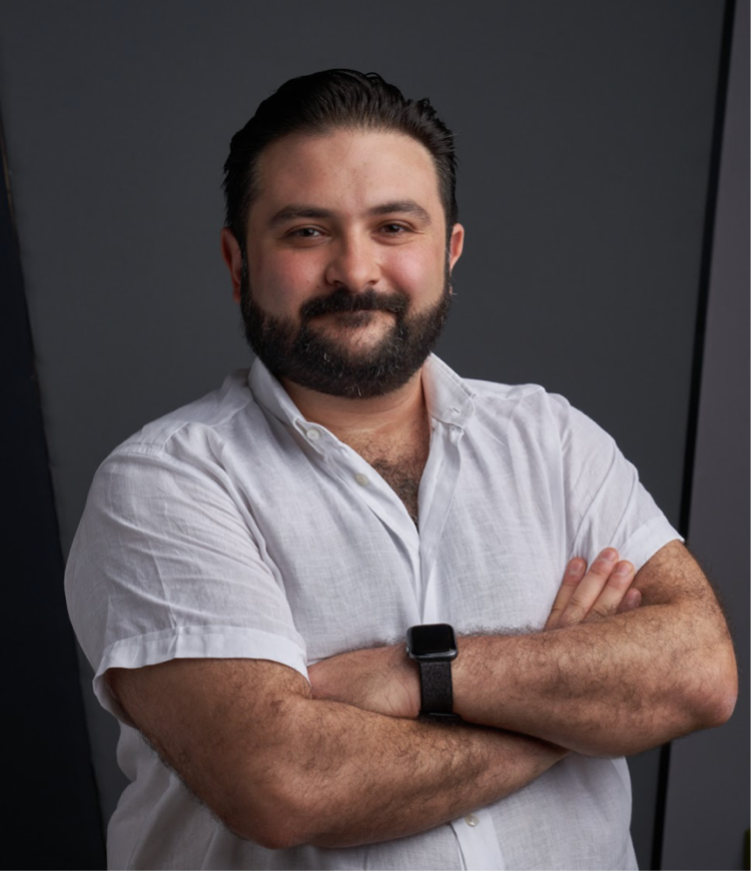
Felipe Cervera
Whose Frontier? Rethinking Space, Power, and Possibility
Felipe Cervera is director of the Centre for Performance Studies and assistant professor of theatre & performance studies at UCLA. His research foci are performance pedagogy, and the interactions between the performing arts and astronautics. His current book project is titled Extraterrestrial Theatre: Performance and the Politics of Outer Space and stems from a ten-year ethnographic study of space artists who use performance, defined broadly, in their work. His edited volume, Performance Pedagogy: Objects, Transfer, Formations will be published by Bloomsbury in 2025. Previous work has been published in English, Mandarin, and Spanish in Theatre Research International, Performance Research, Text & Performance Quarterly, Theatre, Dance & Performance Training, Global Performance Studies, ATEC International Forum, and Investigación Teatral, among other journals and edited collections. He is Deputy Editor of Performance Research. He is from Mexico City and calls Singapore home. -

Marie-Pier Boucher
Whose Frontier? Rethinking Space, Power, and Possibility
Marie-Pier Boucher is Assistant Professor of Media at the University of Toronto. She works on the artistic exploration of science and technology with a specific focus on the design of environments built to sustain life in extreme conditions. She is co-editor of Space Feminisms: People, Planets, Power (Bloomsbury Press, 2024), Being Material (MIT Press, 2019), Heteropolis (2013), and Adaptive Actions Madrid (2010). Her artistic works have been exhibited collectively at the Cultural Canadian Center in Paris, the Moon Gallery, the Rotterdam Architecture Biennale, Ars Electronica, MUTEK, Centre George Pompidoum, Tokyo Wonder Site, Leonard & Bina Ellen Gallery and the Madrid Biennale (2010).
-

Dr. C. Adeene Denton
Whose Frontier? Rethinking Space, Power, and Possibility
Dr. C. Adeene Denton is a planetary scientist, historian, and choreographer whose scholarship and artistic work connects disparate aspects of geology, astrophysics, and the human body. As a scientist, Denton explores the role of giant collisions in shaping the evolution and habitability of ocean worlds across the Solar System. As an artist, Denton has presented work that interrogates the role of humanity in space exploration, including their most recent work, “Chasing Canyons,” a site-specific work choreographed at the Grand Canyon. They are an avid space materialist focused on approaching future planetary exploration from an anti-capitalist, abolitionist framework.Denton is currently a NASA Postdoctoral Program Fellow at the Southwest Research Institute in Boulder, Colorado. They were previously the Astronomer in Residence at the Grand Canyon and a postdoctoral fellow at the University of Arizona’s Lunar and Planetary Lab. Denton holds a PhD in Earth, Atmospheric and Planetary Sciences from Purdue University, an MS in Earth, Environmental, and Planetary Sciences from Brown University, and a BS in Geophysics and BA in History from Rice University. Asteroid 16883 adeenedenton is named for their research on impact processes on outer Solar System worlds, including Pluto.
-

Simone Browne
Whose Frontier? Rethinking Space, Power, and Possibility
Simone Browne is Associate Professor in the Department of African and African Diaspora Studies, and Director of the Center for Women’s and Gender Studies at the University of Texas at Austin. She is currently writing her second book, which examines the interventions made by artists whose works grapple with the surveillance of Black life. She is an EPIC Advisory Board Member, and A People's Guide to Tech Advisory Board Member. Her research focuses on the social and ethical implications of surveillance, both AI-enabled and not. Examining potential algorithmic harms and tech equity in order to better understand the development and impact of AI, her research ranges from the environmental impact of electronic waste to the effects of increased pollutant exposure experienced by those living near data and fulfillment centers. She is the author of Dark Matters: On the Surveillance of Blackness. -

Ellen Oliver
Fast Talks
Ellen Oliver (she/they) is an interdisciplinary dancer, digital media artist, and educator from Blackstone, MA. Her research explores the intersection of rock climbing and dance through technology, installation, sculpture, and performance. She is interested in climbing and route setting as forms of vertical choreography, and she explores the contrast between lightness and weight, falling and flying, gripping and ease to sustain herself on a vertical plane. She studied dance for four years at UNC School of the Arts, holds a BA from Hampshire College, and received an MFA in Dance (Choreography) from the University of Iowa. Ellen has collaborated frequently with artists such as Angela Cole, David Hurlin, Dayita Nereyeth, and Ramin Roshandel. Most recently, Ellen’s solo and collaborative work have been performed in a live OptiTrack motion capture studio, a 360 rock climbing piano installation, an empty grain silo, a green screen climbing wall, and a 50-foot climbing wall. She has performed with companies and projects including Lorraine Chapman the Company, TEN31 Productions/Metamorphosis Dance Company, Fusionworks Dance Company, and Arc Iris/HDC Dance Ensemble. Ellen’s projects have been presented at venues including Masary’s ASC in Boston, the White Mountain National Forest, the Open Air Media Festival in Iowa City, Shoonya Centre for Arts and Somatic Practices in Bangalore, India, Iowa’s International Writers Program, and F-O-R-M in Vancouver, Canada. www.ellenoliverdance.com -
Ken Ueno
Fast Talks
A Rome Prize and Berlin Prize winner, Ken Ueno is a composer, performer, sound artist, and scholar whose work challenges historical notions of music—redefining who gets to make music and by what means. As a vocalist, he is known for inventing bespoke extended techniques and has performed his vocal concerto with major orchestras, including the Boston Modern Orchestra Project, the Warsaw Philharmonic, and the Lithuanian National Symphony Orchestra. His installations have been exhibited internationally at venues such as the Taipei Museum of Contemporary Art, MUAC in Mexico City, and the New Vision Arts Festival in Hong Kong. Daedalus Drones, a fence-labyrinth installation featuring flying drones, premiered at Asia Society Hong Kong in 2021.In 2024, Ueno was a featured artist at Noise Fest, curated by the West Kowloon Cultural District in Hong Kong. That September, the Arditti String Quartet premiered his newest string quartet at the Takefu International Music Festival, where Tosiya Suzuki also debuted his concerto for bass recorder. Most recently, in April 2025, he was featured at A Bunch of Noise, Shanghai’s leading noise music festival.
Ueno is a Professor at the University of California, Berkeley. His writings have appeared in The Oxford Handbook, The New York Times, Palgrave Macmillan, The Drama Review (TDR), and Wiley & Sons. He is co-editor of East Asian Voices of Resistance Against Racism in Music (Ethics Press), and his biography is included in The Grove Dictionary of American Music. www.kenueno.com
-
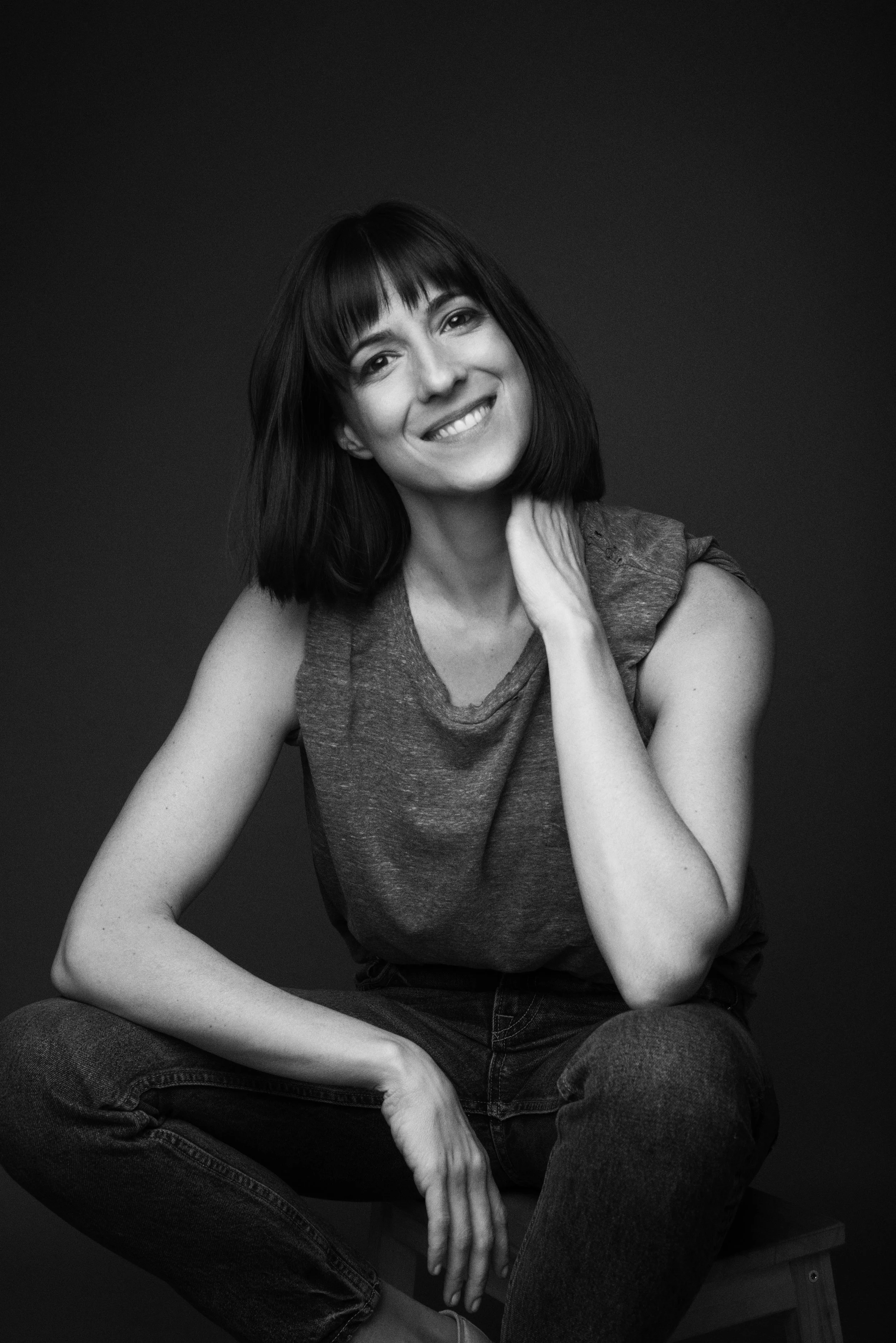
Mary John Frank
Fast Talks & Installation Room
Mary John Frank is a New York-based director and choreographer. Her work informs and uplifts audiences and blends digital filmmaking, contemporary dance, and new technologies. She has directed projects for companies including New York City Ballet, Condé Nast, and Google and her work has screened at venues including Lincoln Center, the Hammer Museum, and Pioneer Works in Brooklyn. She has also worked in production and acquisitions roles at film studios including Paramount Vantage and Warner Bros.Some of her favorite video and XR projects include partnerships with the Center For Health & Gender Equity (now Fós Feminista), the National Women’s Law Center, Oceanic Global and youth climate group, Zero Hour. She has also built live immersive experiences and recently founded The Dance Tech Collective (DTC), a company and collective dedicated to creating meaningful work at the intersection of contemporary dance, theater, and immersive technologies. By providing access to tools, subsidized training, and work opportunities, DTC aims to empower movement artists and bridge the gap between dance and technology in this increasingly digital world.
She has an MFA in Dance from NYU’s Tisch School of the Arts where she received their Video Award providing a full year’s tuition (2013). Additional awards and honors include being a Research Artist in Residence at Barnard College’s Movement Lab, receiving Artizen’s VR Transformation Grant, a 360/VR film grant from Google & Harmony Labs, and Panavision's New Filmmaker Grant. She was also a finalist in the Tribeca Film Festival & IBM's "Storytellers With Watson AI” competition.
-

Benny Simon
Fast Talks
Benny Simon is a dancer, educator, arts administrator, and PhD candidate in Dance Studies at The Ohio State University. His practice and research explore posthuman redirections of institutional, military, and social power through interdisciplinary artworks that combine dance and technology. He served as Assistant Professor of Dance at Ohio University, Director of Arts Administration at Le Moyne College, and as faculty or teaching artist at New York University, Brandeis University, Barnard College, BalletMet, and Gibney Dance. Previously, he held leadership roles as Senior Vice President of Technology at 360i and Director of Marketing at Gibney. Benny also manages the Simon Family Scholarship for Emerging Dancers and founded the DANCE ‘n TELL network.Benny has performed in works by Alexandra Beller, Kendra Portier, and The Lovelies. He has presented his own choreography at Triskelion Arts, The Ohio State University, Ohio University, the Agnes Varis Theater, and the Everson Museum. Some works include Orbit and Sum, Further Responses, Fielding: Drones and Dancers, and the interactive installation, Virtual Topologies. Currently, he is working on the fifth iteration of Layer, a process-based collaborative dance generated by humans and AI, and is contributor and co-editor of the forthcoming anthology, Robot Theater.
-
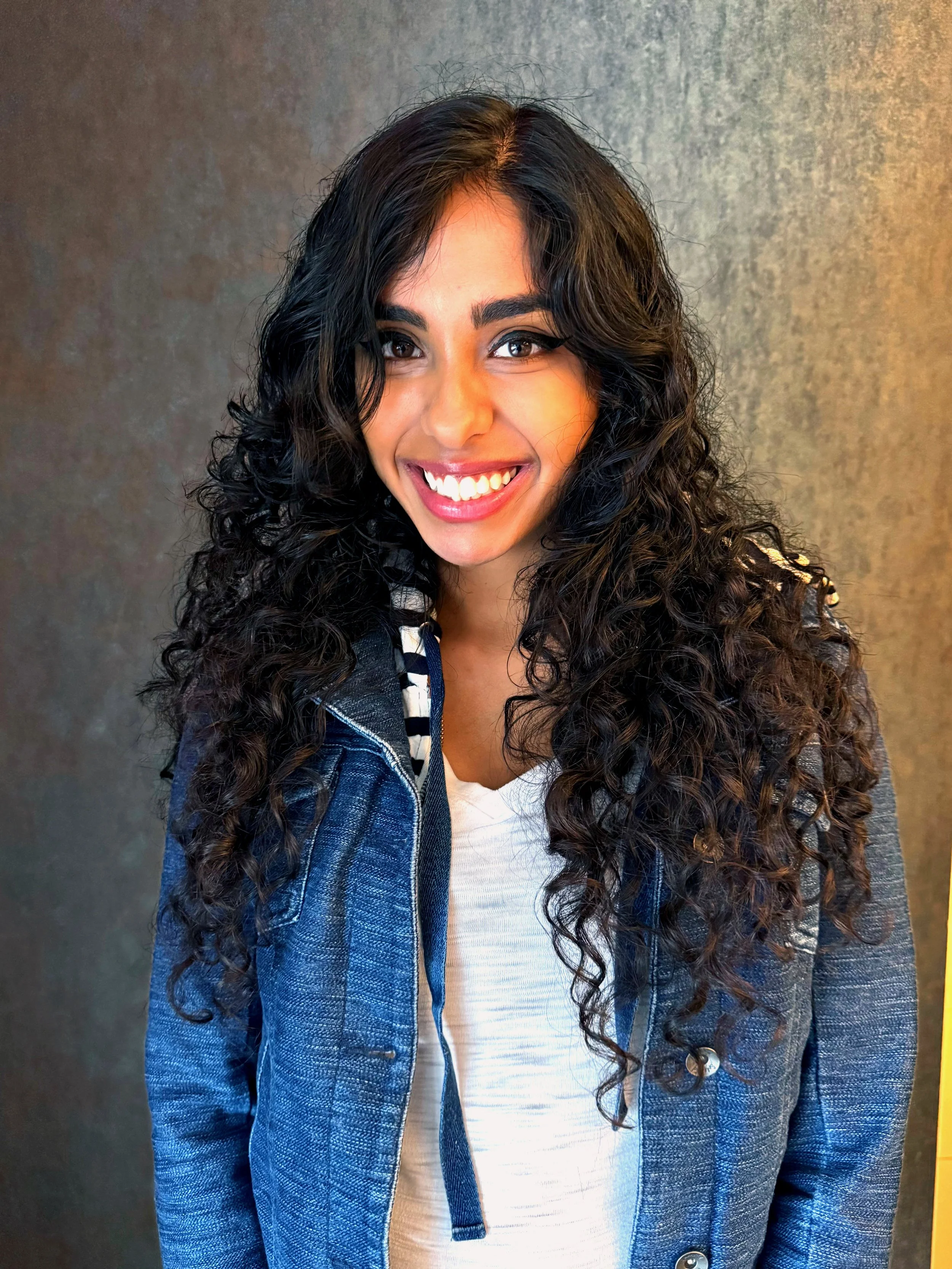
Rishika Kartik
Fast Talks & Volunteer Lead
Rishika Kartik is a rising senior at Brown University, creating her own major in Accessible Design and pursuing a double degree in Biology. She is part of the production team for CRCI, where she contributes to podcast episodes, web accessibility, and conference operations. Her work investigates questions of ethics, disability, and bodily autonomy in emerging technology through both art and scientific research.Her passion for accessibility began in 2018, volunteering with the National Federation of the Blind. Since then, she’s helped create over 60 accessible art workshops for blind community members across the U.S. In Providence, she co-created Creative Visions, a mural project for children with vision loss at Hasbro Children's Hospital, and served as Outreach Director for The Blind Urban Subject, a public installation exploring how blind people engage with urban life.
On the research side, Rishika interned at the Barbara Davis Center, investigating diabetes technology design for people who are blind. As a Royce Fellow, she conducted ethnographic research on immersive art in vision loss rehabilitation. She is a 2025 Newman Civic Fellow, a 2022 US Presidential Scholar, and a 2022 Coca Cola Scholar.Her writing appears in Diabetes Technology and Therapeutics, Future Reflections Magazine, and The Braille Monitor. She has presented work at Johnson & Johnson, Johns Hopkins University, Redline Contemporary Arts Center, Colorado Health Foundation, and more. Her TEDx talk, Creativity is More Accessible Than Meets the Eye, has reached over 1.1 million views.In her free time, Rishika loves to bike, coffee-shop-hop, and overuse the semicolon. -

Adam Dipert
How to Put On a Show... in Outer Space
Adam has worked as a nuclear physics researcher at NC State, Duke, and Los Alamos National Lab. His career as a professional circus performer stimulated a passion for exploring the intriguing connections between movement and mathematics, and finding innovative ways to share these interdisciplinary links to others. Through this combination of scientific and artistic exploration, he brings a unique perspective to teach and inspire a deeper understanding of both physical and mathematical concepts.He has developed Space Juggling, analog movement techniques and apparatuses, multi-week long weightless dance intensives in the US, ridden 58 parabolas on parabolic flights, developed software for calculating human body and object rotational dynamics in weightlessness, and published peer-reviewed papers and journal articles on the topic of movement and dance in alternative gravitational environments.
-

Natasha Tsakos
How to Put On a Show... in Outer Space
Natasha Tsakos is a show maker, conceptual director, designer, writer, producer, and performer whose career spans from TED and the United Nations to a mind-bending array of projects blending fantasy, technology, and liberating performance. She has created for the G20 Summit, Discovery Channel, Climate Reality Project, Tribeca Film Festival, and the Super Bowl with Cirque du Soleil— and speaks at venues from Google to the United Nations General Assembly about the convergence of arts and technology to drive transformative change.Recent works include HUMANODE, an Interactive Reality experience based on the Sustainable Development Goals; CARABOOM, a Knight Foundation–awarded production voted #1 Best Attraction of Miami; and OPUS 9, which closed the Frontiers Planet Prize Awards with a tribute to global environmental challenges.
Natasha’s moonshot is to create shows for space. She participated in NASA Johnson Space Center's Lunar-G and Impedance Study, flew the Lunar Parabolic Flight, and earned her Certificate of Training. Completed Neutral Buoyancy training at NASA Ames, MIT’s New Space Economy program, and NASA's L'SPACE Academy, and is currently studying at the International Institute for Astronautical Sciences (IIAS).
This year, Natasha and her team will produce the first multimedia performance in microgravity with MIT’s Space Exploration Initiative. She envisions a future where the performing arts flourish alongside the space industry while benefiting science, and feels privileged to unite her passions for space and theater, leveraging the ultimate laboratory for humanity. NatashaTsakos.com
-

Nahum
How to Put On a Show... in Outer Space
& Voyage of Memories
b. 1979, Navel of the Moon (Mexico City)
Lives and works in BerlinNahum is an artist and musician whose work explores unconventional narratives to evoke wonder and deepen our understanding of cosmic existence. He employs performance, installation, video, music, painting, and storytelling, often incorporating space technologies, illusionism, and hypnosis to transport audiences into otherworldly experiences.
In 2011, he founded the KOSMICA Institute, a platform fostering cultural and poetic discourse on space and its impact on Earth. His work has been exhibited globally, including at Haus der Kulturen der Welt (Berlin), ICA and The British Library (UK), Garage Museum (Moscow), Ars Electronica (Linz), SESC (São Paulo), and Museo Jumex (Mexico City), among many others.
Nahum curated the Shunt Vaults in London (2008–2011), Mexico’s digital art biennial TransitioMx (2015), and co-curated the UK-wide Tour de Moon festival (2022). As chairman of ITACCUS at the International Astronautical Federation, he advanced the cultural use of space. He was the first artist to receive the Young Space Leader award (2014) and the Karman Fellowship (2021). He has collaborated with ESA, NASA, and Roscosmos on artistic space missions and serves on the board of SpaceEU.
A faculty member at the International Space University, he has lectured at Boston University, Central Saint Martins, and Tec de Monterrey. Published by Penguin and Bloomsbury, Nahum holds a B.Sc. in Computer Science from Tec de Monterrey and an M.A. from Goldsmiths, University of London. He completed the Space Studies Programme at the International Space University in 2016.
-
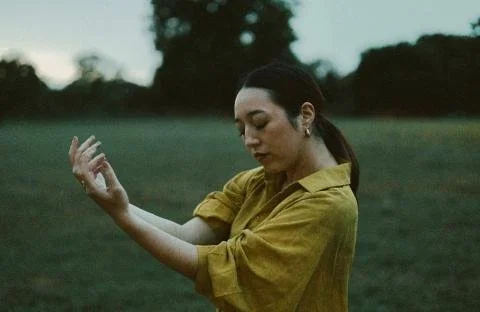
Kate Gow
How to Put On a Show... in Outer Space, CRCI Immersive Artist In Residence
& CRCI Creative Producer
Kate Gow is a dancer, technologist, and poet who delights in storytelling, ritual, and process. She is the Creative Producer and archivist at CRCI, a professional services consultant at Quadient, and an educator at the Linden Hall School for Girls. Her literary work has been published in HAD, F(r)iction Literary Magazine, and Psaltery and Lyre, among others. Kate graduated as valedictorian with a BFA in Contemporary Dance from The Boston Conservatory with the conservatory’s first degree in Dance & Technology, centering artistic intelligence across interdisciplinary fields. She lives in Pennsylvania and is looking for good karaoke song recommendations, if you have any. -
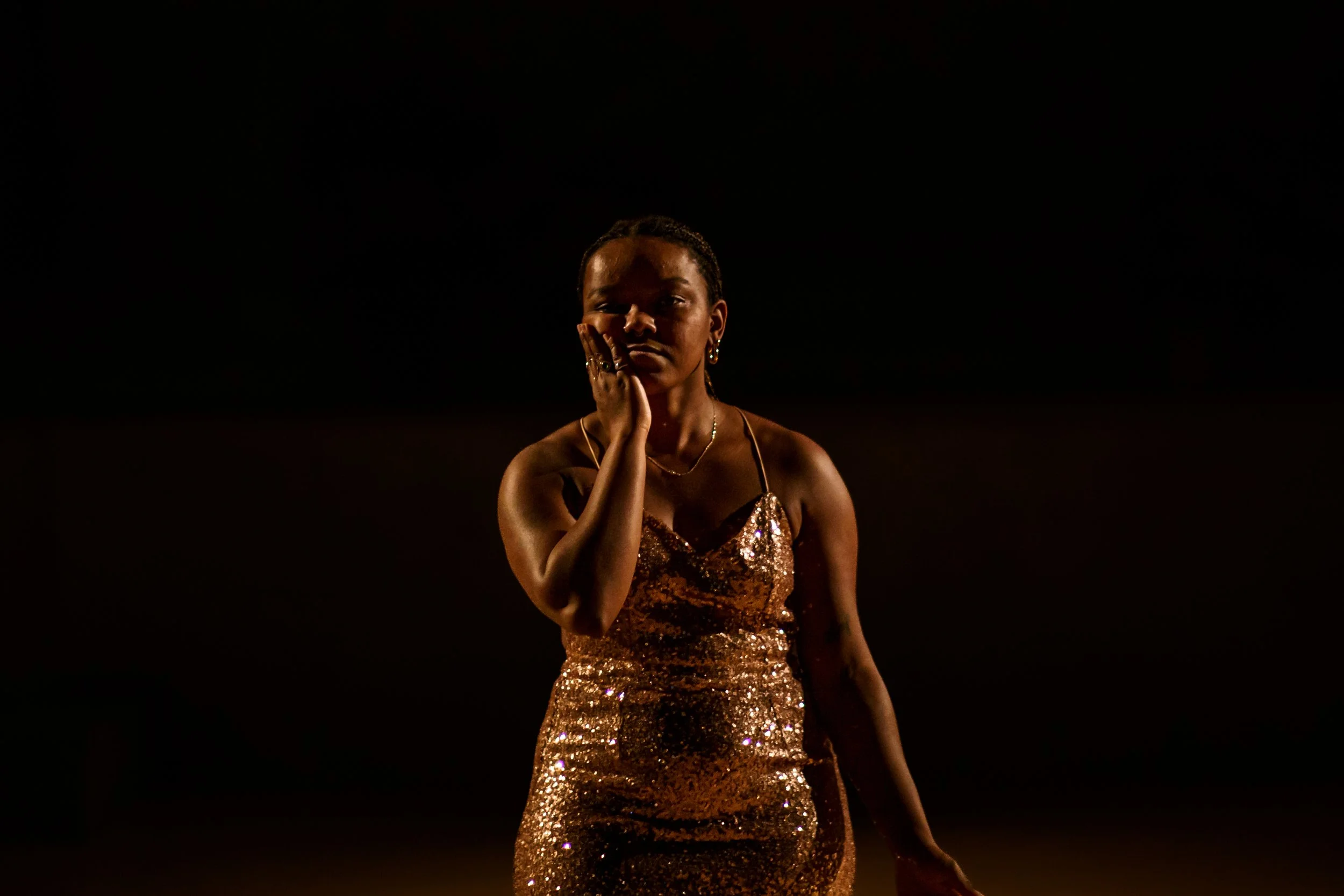
Laila J. Franklin
How to Put On a Show... in Outer Space & CRCI Immersive Artist In Residence
Laila J. Franklin is a multidisciplinary dance artist based in unceded Massachusett and Pawtucket land (Boston, MA). As a choreographer, she has been commissioned by Boston Conservatory at Berklee, Brown University and Salem State University. Her work has been presented by Public Space One, Vivid Oblivion, Kairos Dance Theater’s Cotuit Dance Fest, Loculus Collective’s Sideways Door Festival, Movement Research at The Judson Church, and School For Contemporary Dance and Thought. As a performer, she has worked on projects with Miguel Gutierrez, Dr. Christopher-Rasheem McMillan, Melinda Jean Myers, Stephanie Miracle, Ruckus Dance, and detritus dance, and as a guest artist work with ContraTiempo Activist Dance Theater and Dianne McIntyre. She has been featured as one of Dance Magazine’s “25 to Watch”. Laila holds an MFA in Dance from the University of Iowa, a BFA in Contemporary Dance Performance from The Boston Conservatory, and is a proud alumna of the dance department of Duke Ellington School of the Arts in Washington, DC. -
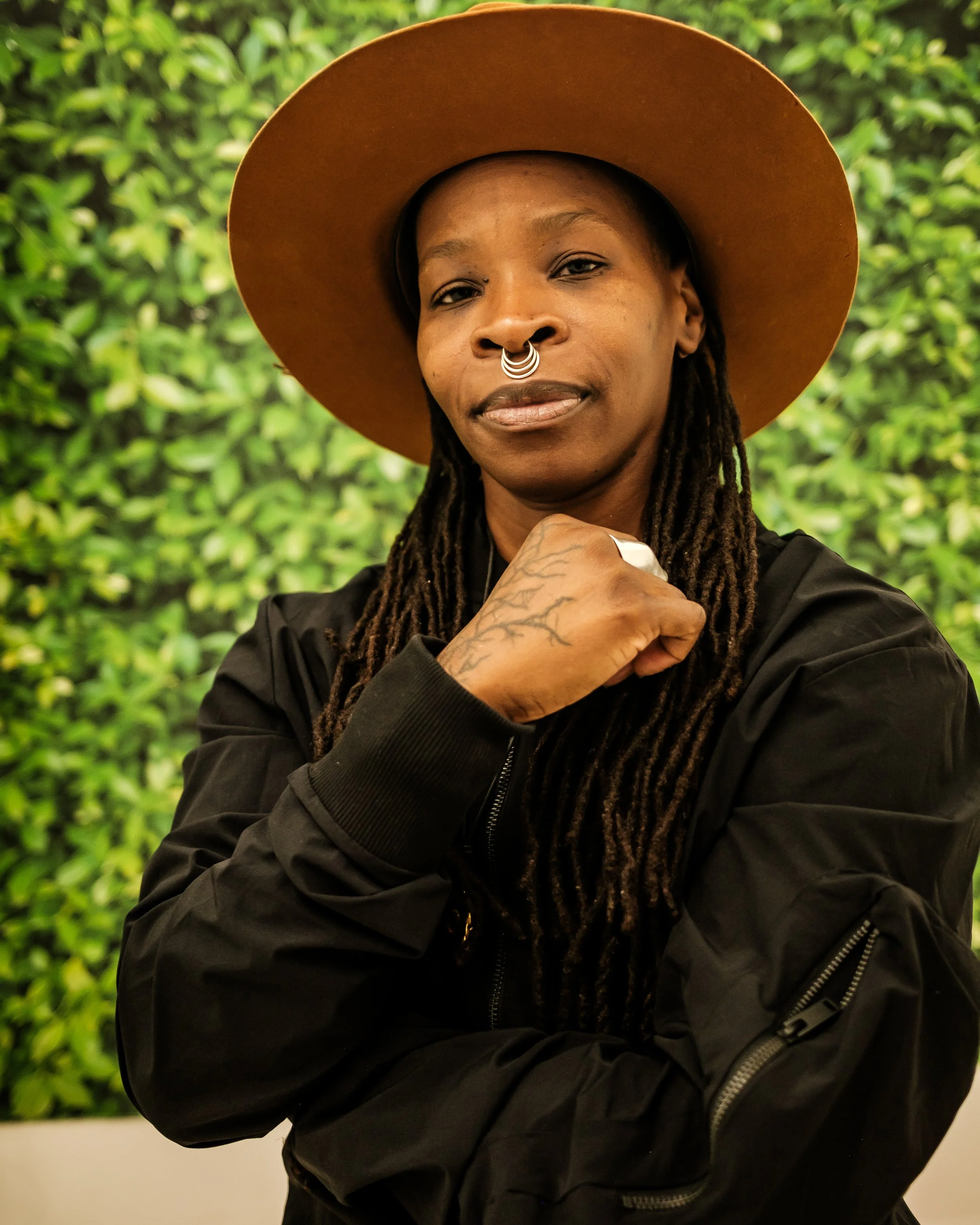
Sage Ni’Ja Whitson
The Revolution Will Not Be Orbitalized: Experiments, Alliances, and Other Necessary Mischief & CRCI Early-Phase Artist Resident
Sage Ni’Ja Whitson (they/them) is an international award-winning multihyphenate noted by Brooklyn Magazine as a culture influencer and the Park Avenue Amory as a “trailblazing XR artist to know”. They are a 2025 DAAD Artist-in-Berlin Visual Arts Fellow, MacDowell Fellow, United States Artist Fellow, Creative Capital and two-time "Bessie" Awardee who engages anti-disciplinarity through a critical intersection of the sacred and conceptual in science, technology, and art. Their multi-form works on dark matter and dark energy, via The Unarrival Experiments, have been commissioned across the world and media, including recently at the Experimental Media and Performing Arts Center (EMPAC), Black Speculative Arts Movement – Denver, a forthcoming solo exhibition at the California African American Museum, and a manuscript to be published by Wesleyan University Press, Transtraterrestrial: Dark Matter and Black Divinities. -
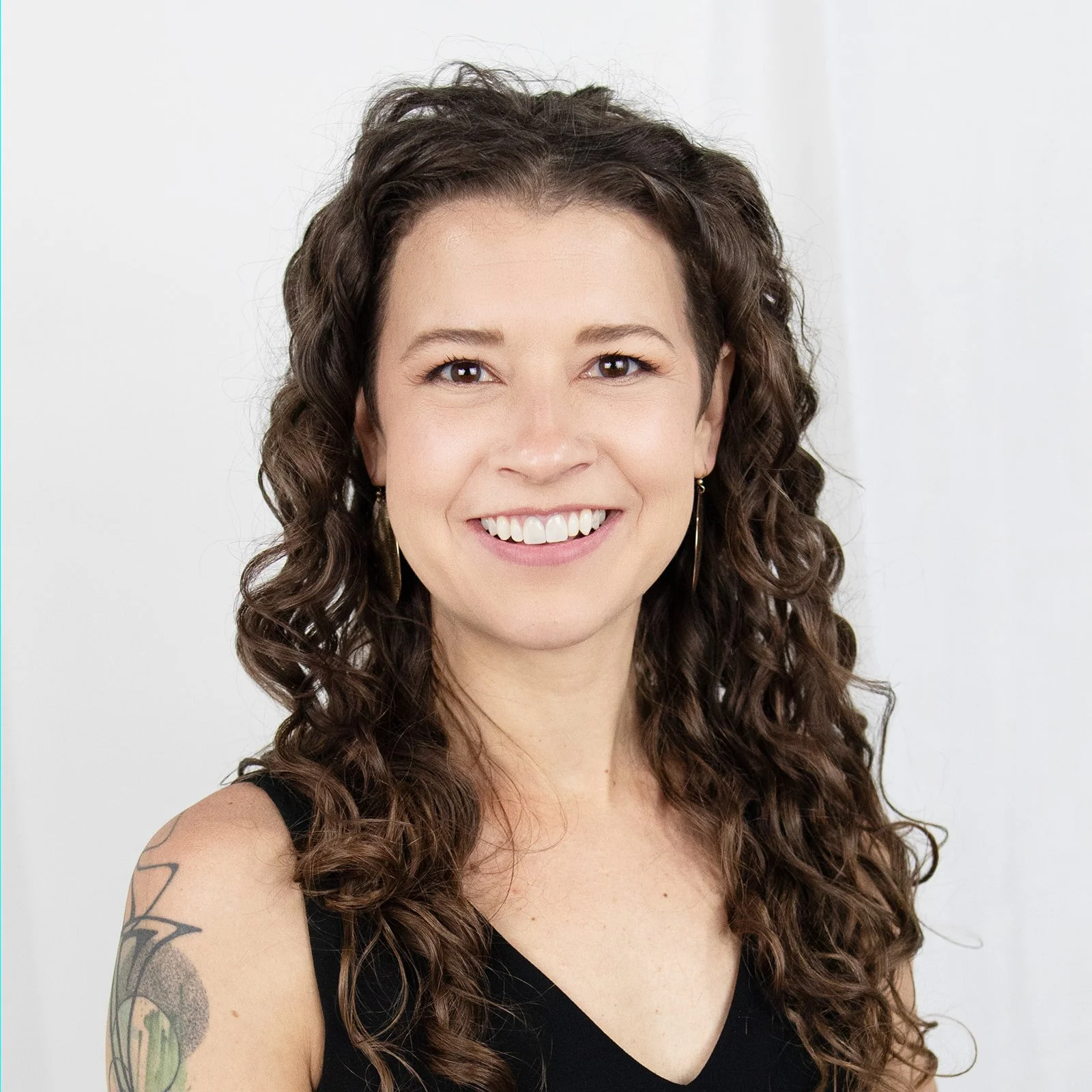
Jessica Rajko
How to dance with and rapidly deactivate a robot workshop...if it’s surveilling you, which it probably is. & Installations Room
Jessica Rajko is an artist/scholar at the intersection of dance and computing. She conducts research with complex digital systems to examine how they influence and are influenced by dance. Her most recent Decoding Digital Bodies project critically examines how human movement—especially dance—shapes the code, metadata, and digital archives of Boston Dynamic’s Spot robots and Choreography SDK. The project is co-led with Varsha Iyengar and currently in collaboration with roboticists in Brown University’s Humans to Robots Laboratory.Jessica’s haptic/sonic media design research examines how touch-based media can expand audience’s experience of live dance performance. She has designed haptic media for BAIRA MVMNT PHLOSPHY, Brother(hood) Dance!, and Dirty Glove Bvck. Her media designs have been presented at the Wexner Center for the Arts (Columbus), Center for Performance Research (Brooklyn), OT301 (Amsterdam), Currents New Media Festival (Santa Fe), Scotiabank Nuit Blanche festival (Toronto), and Phoenix Art Museum.
She has been invited to present at UToronto’s BMO Lab for Creative Research, UMich’s Performing Arts Technology Seminar Series, Harvard’s Digital Futures Consortium, UPenn’s Price Lab for Digital Humanities, Davidson College’s Gender and Technology Seminar Series, and University of New Mexico’s ART Lab. She has been published in the Dance Research Journal, Journal of Theatre, Dance and Performance Training, Dance Education in Practice, and British Computer Society, along with several chapter contributions in dance, human-computer interaction, and digital humanities. Jessica currently serves as the Associate Chair of the Maggie Allesee Department of Theatre and Dance at Wayne State University.
-

Elijah Lennington
How to dance with and rapidly deactivate a robot workshop...if it’s surveilling you, which it probably is.
Elijah Lennington is a movement artist specializing in dance theatre, contemporary partnering, floor-work, and aerial arts. He combines his love for research, activism, and movement all his creative research. Elijah’s current work examines how social patterns and systems influence social norms and cultural formation. He received his BFA in Dance from Wayne State University in 2024 with a minor in Anthropology.
Elijah is currently working with the Decoding Digital Bodies as a performer and researcher. He also choreographs and performs with Dance Uprising in Ann Arbor, MI and works at Ann Arbor Aviary as an aerialist. Elijah co-presented with Jessica Rajko at NYU Tisch’s and the Joyce Theater’s symposium on leadership, advocacy, and technology in dance and movement-based practices, and he has worked on numerous projects in and around Detroit, MI. He was heavily involved in Wayne State University’s student run company Dance Workshop, where he took on the roles of Executive Director, choreographer, and performer. Elijah was the research assistant for Detroit Dance Theatre’s Devil’s Shoestring, and he is in the final stages of his National Pilates Certification, with a focus on hypermobility. -
Ivy He
How to dance with and rapidly deactivate a robot workshop...if it’s surveilling you, which it probably is.
Ivy He is a robotics researcher, engineer, dancer, and interdisciplinary explorer investigating how embodied movement can inform intuitive human-robot interaction. She is currently a Ph.D. candidate in the Human to Robot Lab at Brown University, advised by Professor Stefanie Tellex. Her work integrates robotics, cognitive science, and choreography to develop systems where robots interpret and respond to human gestures and language in dynamic, collaborative environments.Ivy holds a B.S. in Mechanical Engineering and Robotics from Carnegie Mellon University. During her time at CMU, she was deeply involved with the Iris Lunar Rover project—the first American student-built rover to head to the Moon. Designed to demonstrate lightweight, low-cost robotic exploration, Iris represents a milestone in student-led space robotics. Ivy contributed first as a systems engineer working on validation and verification, and later as the Media & Creative Lead, helping shape the team’s public-facing identity through design, storytelling, and archival work that bridged technical innovation with creative expression.
With a background that spans engineering labs and dance studios, Ivy approaches robotics as a site of embodied inquiry. She is especially interested in how movement can serve as a shared language between humans and machines, and how interdisciplinary frameworks can expand the way we imagine and design future interactions.
-
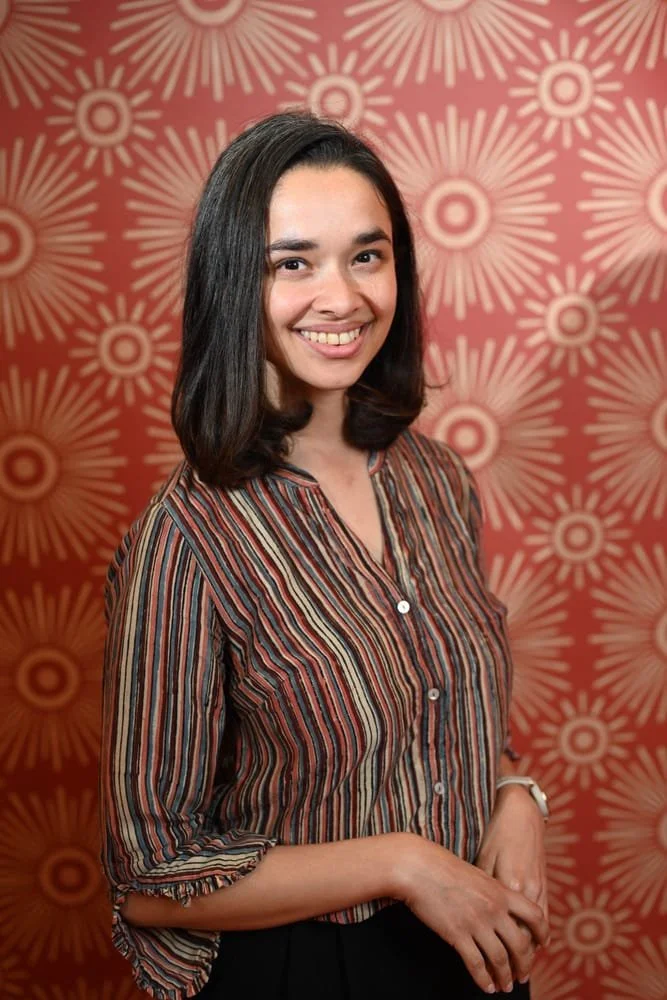
Varsha Iyengar
How to dance with and rapidly deactivate a robot workshop...if it’s surveilling you, which it probably is.
Varsha Iyengar is a creative technologist and movement practitioner based in San Francisco, USA and Bangalore, India. Her work largely involves integrating movement and technology to create multifaceted immersive performance environments.With formal training in Bharathanatyam and Contemporary dance, Varsha has been a dancer for Nritarutya, an Indian Contemporary dance company in Bangalore, India. She is also a founding member of Driven Arts Collective, a California-based collective where she has developed works such as CELSO, Khora, and Digital Milk, which explores themes of digital futures co-authored by humans and AI-driven emerging technologies. These pieces have been presented at CounterPulse, SAFEhouse Arts, and ODC in San Francisco, supported by grants such as the CLTC.
Her academic work and research based on data capture and analysis of vernacular movement have been presented at multiple conferences including MOCO and CHI. She also sits on the Board of Directors at CCAM, an artist-run platform based in Chicago.
Varsha’s work is rooted in inquiry and multidisciplinary collaboration, inviting equitable and critical examinations of technology within an arts practice. Her current project, Decoding Digital Bodies is a collaboration with Jessica Rajko and investigates how movement influences robotics research and development, with a particular focus on Boston Dynamics Spot robots. She is also directing and producing an international project based in India, Where Things Go, which is an exploration of the intricate and often unseen relationships we have with everyday objects and technological tools. -
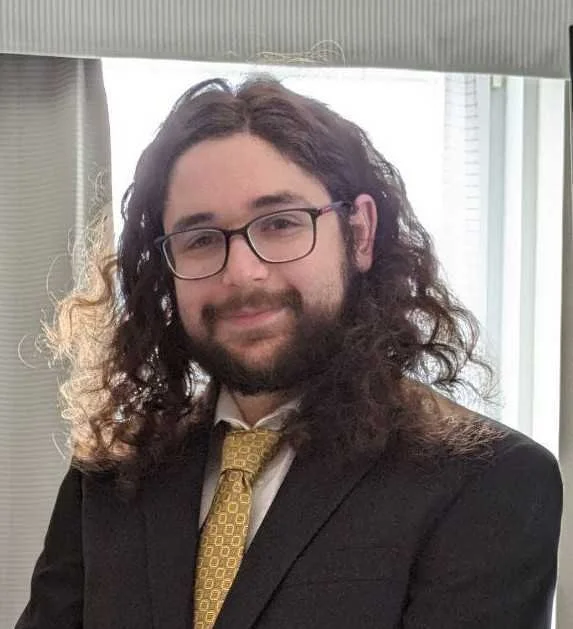
Max Merlin
How to dance with and rapidly deactivate a robot workshop...if it’s surveilling you, which it probably is.
Max Merlin is a PhD candidate in the Intelligent Robot Lab at Brown University working with Professor George Konidaris. His research is focused on developing new ways to allow robots to reason and plan effectively in complex environments. He got his undergraduate and masters degrees in robotics engineering from WPI. In recent years he has leaned more into his artistic side using robots, developing dance performances on the Boston Dynamics Spot platform at the Robotics and AI Institute (formerly Boston Dynamics AI Institute), at the Smithsonian with Catie Cuan and Eric Rosen, and at the Innovation Showcase at Brown University. -
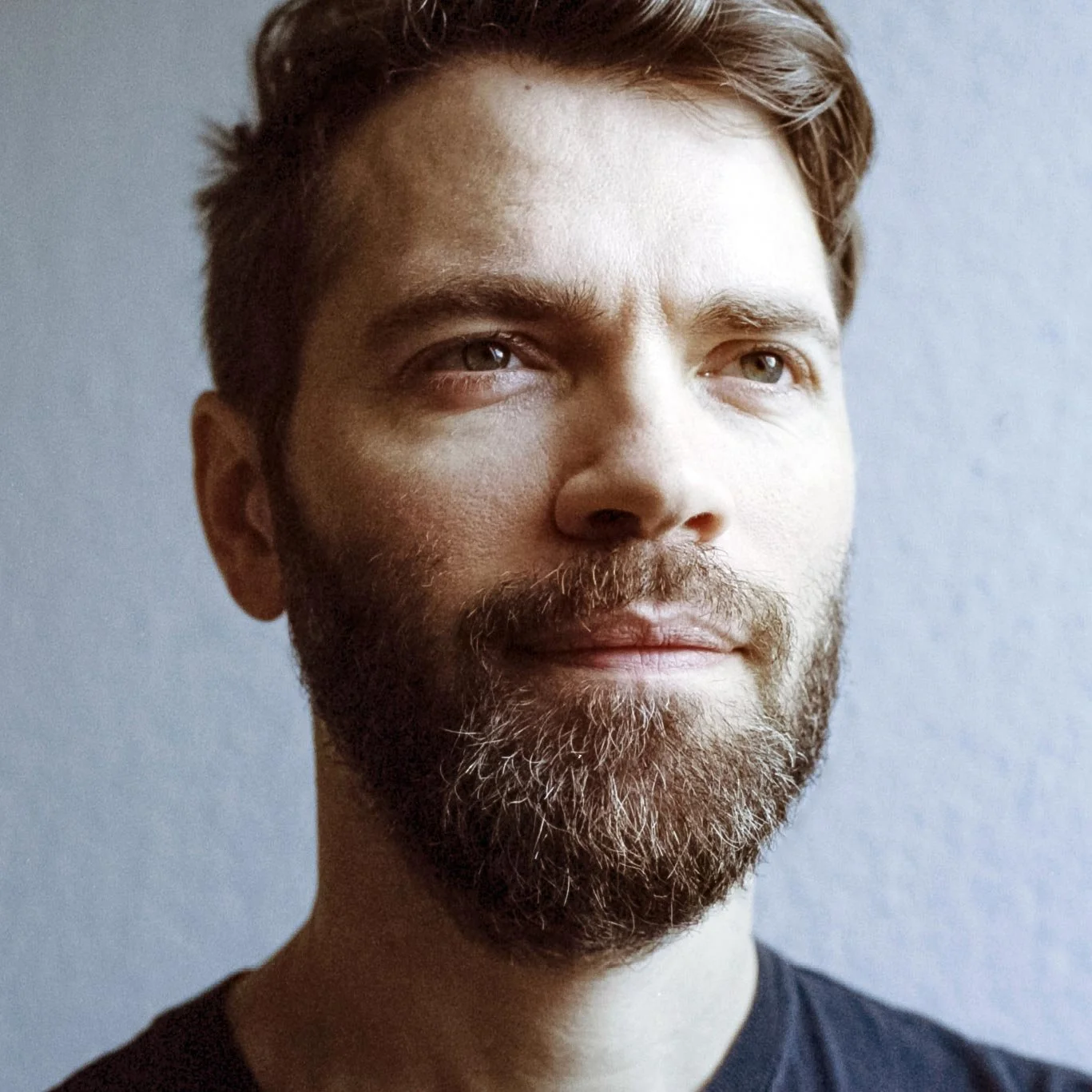
Jason Snell
Biofeedback Soundbath
Jason Snell utilizes biosensors and musical neurofeedback loops to explore themes of vulnerability, entrainment, and transcendent mental states. As a meditator, programmer, and electronic musician since the mid-1990s, he explores consciousness and transhumanist themes through performances that integrate biofeedback systems. He has presented this work at the Metropolitan Museum of Art, the Smithsonian Hirshhorn, MIT, the Imperial College London, and the University of Europe in Berlin.He earned a Master's in Interactive Media Studies from NYU in 2023, with studies spanning New York, Berlin, and Shanghai. He’s taught electronic music classes at NYU Tisch and is conducting musical neurofeedback research in collaboration with the NYU Department of Psychology and UCLA. His thesis work involved developing biofeedback soundscapes designed to guide the brain into creative, subconscious states of mind.
His music career, spanning almost three decades, includes over 180 performances, 16 albums, 33 EPs and singles, and appearances on 45 compilation albums, along with several film scores.
He has received over $175,000 in art and innovation grants and awards, worked extensively with public arts and STEM programs in K-12 schools, and won his home state’s top award, the Iowa Artist Fellowship.
-

Michael Figueroa
Slapstuck, Reprise, Movement in Microgravity Workshop & CRCI Immersive Artist In Residence
Michael Figueroa (he/him) is a performer, director of Ruckus Dance, and dance teacher currently residing in Asheville, NC. His dances navigate rule-breaking, rote and body memory, personal anecdotes, audience participation, and improvised situations. His work has been commissioned by SPACE Gallery (ME), Dance Now Boston, Outside the Box Festival, Mobius Artists Group (MA), and The Dance Complex. He has worked collaboratively with Jimena Bermejo, Sonia Santvoord, Alexander Davis, and Sarah Mae Gibbons; and performed in works by Mark Dendy, Prometheus Dance, Margot Gelber & Dancers, Alternative Dance Nation, Public Displays of Motion, and Laila Franklin. In Asheville, Michael has performed “ways of rendering a man blind” as part of the 2024 Asheville Fringe Festival.Michael was an inaugural teacher with Midday Movement Series starting in 2015. Midday Movement provided focused time and space, peer support, and consultation with Marissa Molinar to develop his practice. The ever-growing initiatives and commitment to building a future generation of dance teachers in New England and beyond, in tandem with the focused career support, still provide an overwhelming insight into his teaching practice today. Michael has taught classes and workshops at Gibney Studios, Cambridge Rindge and Latin School, NACHmo Boston, Moving Target Boston & Portland, and Boston Arts Academy.
-
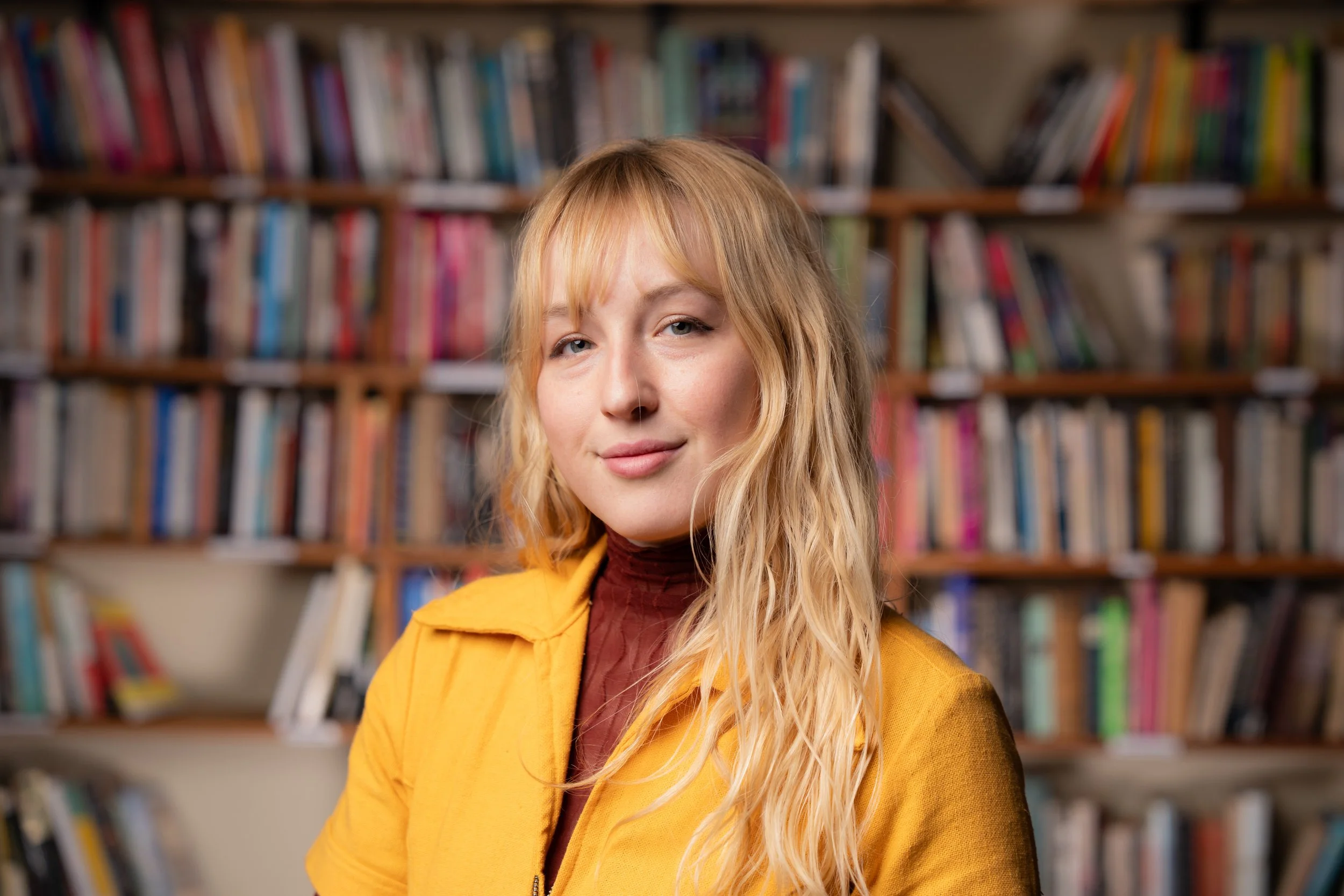
Sasha Peterson
Slapstuck, Reprise, Movement in Microgravity Workshop & CRCI Immersive Artist In Residence
Sasha Peterson currently lives and grew up dancing in the Boston area. In 2016, she completed a dance major at Connecticut College, through which she had the privilege of learning from and performing works by renowned dance faculty and guest artists. Sasha has worked with Ali Kenner Brodsky & Co., Audrey Maclean, Betsy Miller Dance Projects, Boston Lyric Opera, Grant Jacoby & Dancers, Jessy Zizzo & Dancers, Laila Franklin, Lisa Race, Shura Baryshnikov, and apprenticed at David Dorfman Dance. She is a company member at Ruckus Dance and VLA DANCE, and is also in process with Continuum Dance Project. She currently teaches at Midday Movement Series and is also a licensed massage therapist.
-

Anna Watkins Fisher
The Revolution Will Not Be Orbitalized: Experiments, Alliances, and Other Necessary Mischief
Anna Watkins Fisher is a cultural and media theorist. She is the author The Play in the System (Duke University Press, 2020) and Safety Orange (University of Minnesota Press, 2021); co-author with Precarity Lab of Technoprecarious (Goldsmiths/MIT Press 2020); and co-editor with Wendy Hui Kyong Chun of New Media, Old Media: A History and Theory Reader (2nd edition, 2015). Her current book, Yes Machine: Relentless Positivity at the End of the World, explores how the ability to say "no" is being designed out of our everyday devices and infrastructures. She is currently Senior Lecturer of Digital Humanities at King's College London. Previously, she was Associate Professor of Digital Studies and American Culture at the University of Michigan. -
Vivekanand Pandey Vimal
The Revolution Will Not Be Orbitalized: Experiments, Alliances, and Other Necessary Mischief
Vivekanand Pandey Vimal is a research scientist in the Ashton Graybiel Spatial Orientation Lab at Brandeis University. He studies spatial disorientation by creating Martian, Lunar and 0g analog conditions where participants have to balance themselves while strapped inside a large machine. He is examining whether human augmentation (using technology/devices/AI to enhance human performance) can be a countermeasure for spatial disorientation. Vivekanand also explores collaborative intersections between his research and art, dance and spirituality. He loves having deep discussions and collaborating, so don’t hesitate to contact him! somde@brandeis.edu -
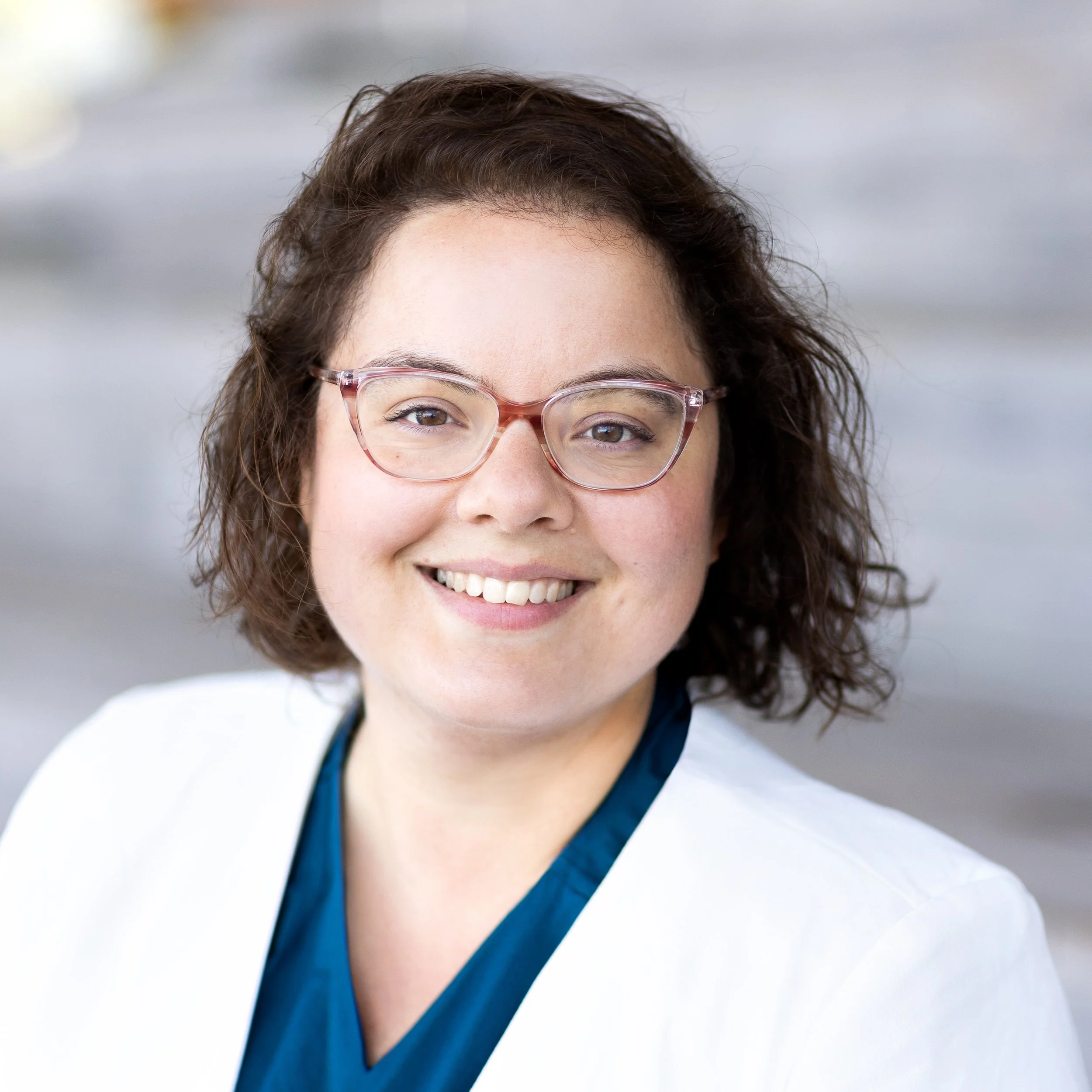
Maria Varmazis
The Revolution Will Not Be Orbitalized: Experiments, Alliances, and Other Necessary Mischief
Maria Varmazis is the host of T-Minus Space Daily, a leading podcast delivering daily intelligence briefings and interviews for space professionals - 500 episodes and counting. She brings a unique perspective to her space coverage with a background in tech journalism and cybersecurity, combining sharp analysis with approachable, conversational interviews to connect the dots between space, cybersecurity, and emerging technologies.

